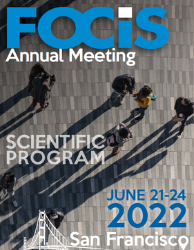Interferon Gamma Induction of TH1-like Tregs Dampens Anti-viral Responses

Angela M. Gocher-Demske, PhD
Postdoctoral Scholar
University of Pittsburgh School of Medicine
Pittsburgh, Pennsylvania, United States
Marianna Rowlands, PhD
Associate Director
Novartis Institutes for Biomedical Research
Cambridge, Massachusetts, United States
Presenting Author(s)
Chair(s)
We have previously shown that Treg response to interferon gamma (IFNγ) in the tumor microenvironment is required for response to immunotherapy. We aimed to determine the role of Treg response to IFNγ during viral infection and the impact on suppression of the anti-viral T cell response. Mice, which have IFNγ receptor (IFNGR1) deleted from Tregs (Ifngr1L/LFoxp3Cre-YFP) were infected with an acute (Armstrong), or chronic (Clone 13), strain of lymphocytic choriomeningitis virus (LCMV) to study Ifngr1-deficient Tregs compared to controls (Foxp3Cre-YFP mice). Additionally, mice which have IL12 receptor β2 subunit (IL12Rβ2) deleted from Tregs (Il12b2L/LFoxp3Cre-YFP) were infected with Clone 13 to study Il12rb2-deficient Tregs compared to controls. Surprisingly, Treg response to IFNγ, but not IL12, induced helper T cell 1 (TH1)-like polarization (expression of T-bet, CXCR3 and IFNγ) in LCMV Clone 13, which was required for adequate suppression of effector T cells. In LCMV Armstrong and Clone 13 infected mice IFNGR1 deletion from Tregs prevented TH1-like polarization and reverted to a TH2-like state (expression of GATA-3, CCR4 and IL-4). scRNAseq of viral antigen-specific CD8+ T cells from Clone 13 infected mice showed that Ifngr1 deletion from Tregs promoted CD8+ T cell memory. These findings were confirmed in an Armstrong/Listeria monocytogenes-GP33 memory model. Further, Ifngr1 deletion from Tregs enhanced response vaccination when challenged with Clone 13. These findings provide fundamental insight on how Tregs sense inflammatory cues from the environment (IFNγ) during chronic viral infection to control the effector T cell response to prevent overt tissue damage, and shape the memory response.

